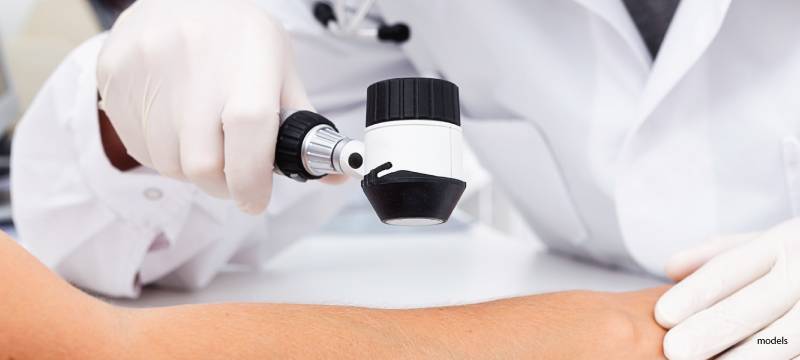Understanding Cysts: Comprehensive Guide to Causes, Symptoms, and Treatments

Cysts are a common medical condition that affects people of all ages. They are essentially pockets of tissue that contain fluid or other substances. While some cysts can be harmless and go unnoticed, others are unwanted for cosmetic issues or others can become enlarged, inflamed, and painful if they remain untreaded. In this blog post, we will provide a comprehensive understanding of cysts, their causes, symptoms, and treatments.
What Are Cysts?
Cysts are closed sac-like structures that are distinct from the tissue around them. They are skin growths that can be filled with liquid, but often contain semi-solid substances. They can occur anywhere in the body and vary in size. Most cysts start off small but can grow after becoming filled with additional matter. While cysts might sound alarming, they are typically slow growing, non-painful, and benign (non-cancerous). Unless they become infected or significantly disrupt daily activities, cysts may not require immediate treatment. A dermatologist will assess your cyst and assist you in determining whether treatment is necessary.
What Causes Cysts?
Cysts are caused by various factors, with the precise causes varying depending on the type of cyst. Some cysts are formed when cells multiply at a rapid rate, while others are caused by a blockage in the body’s natural drainage systems. For example, sebaceous cysts are caused by a blockage in the sebaceous glands (the glands that produce the oily substance that lubricates the hair and skin).
Cysts/abscesses may also be a response to infection or the body’s immune response to the presence of a foreign object. In both cases the body tries to protect itself by creating a cyst sac around the infected area or foreign object.
Types of Common Cysts
There are several types of cysts, each with distinct characteristics and causes. The most common types include:
- Epidermoid cysts: These cysts develop when cells from the top layer of skin (epidermis) proliferate within a confined space beneath the skin.
- Pilar cysts: Also known as trichilemmal cysts, these cysts originate from hair follicles and typically contain a substance resembling thick, white toothpaste.
- Sebaceous cysts: These cysts arise from blocked oil glands (sebaceous glands) and are filled with a mixture of oil and skin cells.
- Milia: These small, white cysts develop when keratin (a protein found in skin) becomes trapped beneath the surface of the skin.
- Dermoid cysts: These rare cysts form from embryonic cells and can contain a variety of tissues, including skin, hair, and sweat glands.
- Cystic Acne: A severe form of acne where bacteria, oil, and dead skin cells become trapped in hair follicles, leading to the formation of large, tender cysts beneath the skin’s surface.
Each type of cyst has distinctive symptoms and requires specific treatments.
Symptoms of Cysts
The symptoms of cysts largely depend upon their size and location. Some cysts are asymptomatic and may only be discovered during routine medical examinations. However, certain cysts can cause noticeable symptoms. In some cases, a cyst might cause pain, redness, or swelling in the area where it is located. If a cyst ruptures, it can cause severe pain and lead to an infection or inflammation. Furthermore, if a cyst is pressing on a nerve or is located in a place that restricts the flow of blood or other bodily fluids, it can cause additional symptoms.
How Are Cysts Diagnosed
Skin cysts are typically diagnosed through a simple physical examination of the skin and a review of the patient’s medical history. During the physical exam, the doctor will look for signs of a cyst, such as a noticeable lump or swelling. They may also ask about any symptoms the patient has been experiencing.
In certain cases, a biopsy might be performed. This involves taking a small sample of the cyst’s tissue and examining it under a microscope to check for signs of cancer.
Should I Pop My Cyst?
Cysts that induce pain or attain significant size necessitate treatment. Attempting to rupture cysts, although a common impulse, is ill-advised. In the most favorable outcome, the cyst will merely replenish itself post-rupture. However, in the worst-case scenario, infection may occur. Seeking consultation with a dermatologist is advisable to obtain proper treatment for cysts. If you are concerned with signs of infection (redness, pain, drainage, fevers) please seek immediate medical attention (urgent care, emergency room) if you are not able to see a dermatologist.
Treatments for Cysts
The treatment for cysts depends on several factors including the type of cyst, its size, its location, and whether it is causing symptoms. If a cyst is not causing any symptoms and is not disrupting normal bodily functions, the doctor may recommend a “wait and see” approach. This means the cyst will be monitored over time to see if it grows or causes symptoms.
For cysts that are causing symptoms, treatment options can include drainage or cortisone injections. Drainage involves the removal of fluids within the cyst which typically alleviates any pain caused by the cyst as well as decreases its size. Cortisone can also be injected into the cyst to shrink its size.
In cases where a cyst is large, is causing severe symptoms, or has the potential to become cancerous, surgical excision may be recommended. Surgery is also the only way to permanently get rid of a cyst as it fully removes the cyst sac. Surgical removal is often successful; however, cysts can sometimes still reoccur.
When To See A Dermatologist
While some cysts are completely harmless, we recommend seeing a dermatologist if:
- There is persistent pain or discomfort along the skin around the cyst
- The cyst restricts normal range of motion
- The cyst is large enough to cause appearance issues
- If there is a new growth/bump present
Patients should never pop or extract cysts on their own. Typically, cysts that reach a size where they cause discomfort are more prone to infection. When these cysts are popped, the infected fluids may leak onto the skin, exacerbating the infection. Furthermore, attempting to pop a cyst can push the fluid deeper into pores and surrounding tissues, potentially spreading the infection underneath the skin’s surface.
Instead, consult with a board certified dermatologist who will have the proper tools and experience to provide safe and effective treatment.
This material is for general information purposes. It is not intended to diagnose or treat a specific condition. Please see your dermatologist for any new growths or spots of concern.
Disclaimer: The contents of the Westlake Dermatology website, including text, graphics, and images, are for informational purposes only and are not intended to substitute for direct medical advice from your physician or other qualified professional.
